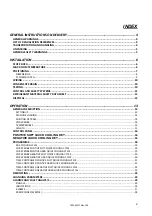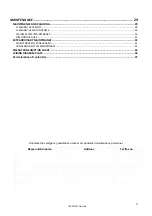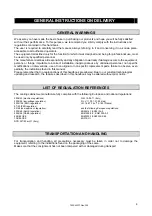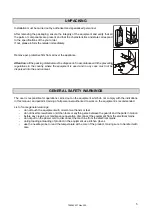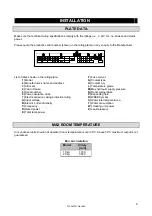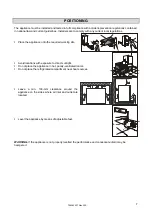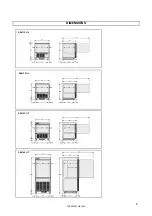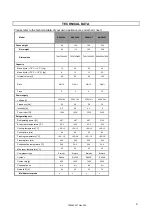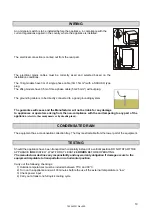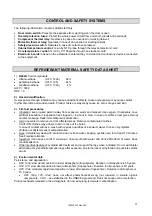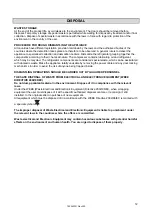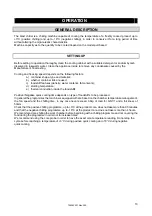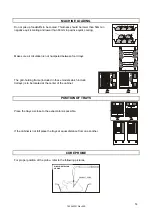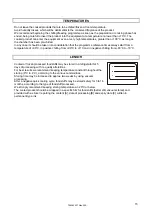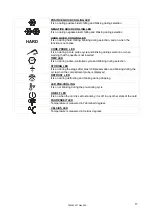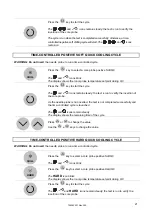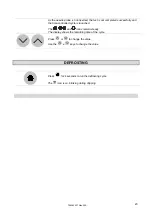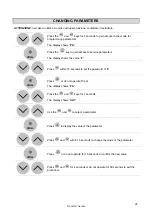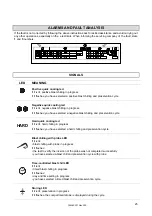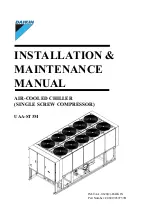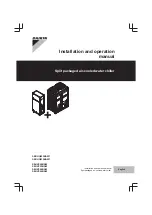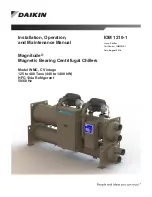
11
765042231 Rev.000
CONTROL AND SAFETY SYSTEMS
The following information concerns skilled staff only.
Door micro-switch:
Prevents the appliance from working when the door is open
Overall protection fuses:
Protect the whole power circuit from and short-circuits and overloads
Compressor thermal relay:
Operates in case of an overload or working failures
Motor-fan thermal relay:
Operates in case of an overload or working failures
Safety pressure-switch:
Operates in case of coolant over-pressure
Cabinet temperature control:
Is run by NTC probe through the relevant electronic card
Core temperature control:
Is run by PT100 probe through an electronic card
Electronic boards:
based on the parameters entered they command and control any devices connected
to the equipment.
REFRIGERANT MATERIAL SAFETY DATA SHEET
1)
R404A
: fluid components
trifluoroethane (HFC 143a) 52%
pentafluoroethane (HFC 125) 44%
tetrafluoroethane (HFC 134a) 4%
GWP = 3722
ODP = 0
2) Hazard identification
Overexposure through inhalation may cause anaesthetic effects. Acute overexposure may cause cardiac
rhythm disorders and sudden death. Product mists or sprays may cause ice burns of eyes and skin.
3) First aid procedures
Inhalation:
keep injured person away from exposure, warm and relaxed. Use oxygen, if necessary. Give
artificial respiration if respiration has stopped or is about to stop. In case of cardiac arrest give external
cardiac massage. Seek immediate medical attention
Skin:
use water to remove ice from affected areas. Remove contaminated clothes.
CAUTION: clothes may adhere to skin in case of ice burns.
In case of contact with skin, wash with copious quantities of lukewarm water. In case of symptoms
(irritation or blisters) seek medical attention.
Eyes:
immediately wash with ocular solution or fresh water, keeping eyelids open for at least 10 minutes.
Seek medical attention.
Ingestion:
it can cause vomit. If conscious, rinse mouth with water and drink 200-300 ml of water. Seek
medical attention
Other medical treatment:
symptomatic treatment and support therapy when indicated. Do not administer
adrenaline or sympathetic mimetic drugs after exposure, due to the risk of arrhythmia and possible cardiac
arrest.
4) Environmental data
Persistence and degradation
HFC 143a:
slow decomposition in lower atmosphere (troposphere). Duration in atmosphere is 55 years.
HFC 125:
slow decomposition in lower atmosphere (troposphere). Duration in atmosphere is 40 years.
HFC 134a:
relatively rapid decomposition in lower atmosphere (troposphere). Duration in atmosphere is
15.6 years
HFC 143a, 125, 134a:
does not affect photochemical smog (not included in volatile organic
components – VOC – as established in the UNECE agreement). Does not cause ozone rarefaction.
Product exhausts released in the atmosphere do not cause long-term water contamination.


